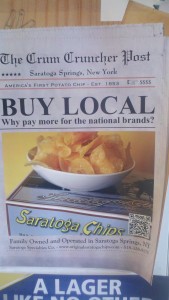In most of our marketing we are trying to get people to do something. This used to be the purview of “direct response” advertising but on the web every page is full of clickable links, and today even the most image-y print ad or TV spot will include a URL or 800 number to find out more.
We want to pay attention to how we craft these calls to action (CTAs for short) because they affect our paychecks as copywriters. If we can prove that our efforts produced more calls or dollars or customers, we will get more work and bigger fees. Here are a few tips:
Combine the call to action with a benefit statement. Are classes limited to 20 students to ensure personal attention? Then say that in the call to action, followed by a request to respond now to avoid being left out. Is the product going to taste great, improve health or make them money? Then add urgency to the CTA: To enjoy the health-giving benefits of royal jelly bon-bons just as soon as we can ship them, call our hotline right now.
Tell the reader early and often what you want them to do. If it’s a direct mail letter you want to cut to the chase no later than the third or fourth paragraph. You’ve created desire or concern through your windup, now tell the reader specifically how they can scratch the itch. If it’s a long letter, repeat the call to action at least once per page. CTAs in web pages and emails are more compact since they are clickable links, so they can be used more frequently, as often as once every couple of paragraphs.
The reason for the multiple CTAs is simply that you never know exactly when your reader will be ready to take action, and you don’t want to take a chance on losing them because they get distracted and wander off the page.
Make the call to action consistent throughout your communication. Don’t invite them to request more information in one CTA, then tell them you want an order right now further down the page. If you have a freebie or a giveaway contest for them, mention it in each CTA or they will wonder, “hey, where is that prize I was going to win?” The reason is that readers are donkeys. They will follow willingly as long as you give them no reason not to, but if you throw in a distracting or confusing element they will dig in their heels and do everything except what you want.
Deliver a complete CTA at the end of a sales letter, or the sidebar of an email invite. This includes everything the reader needs to know about the offer—and all possible response options including mail, phone, email, web link, fax and maybe something else. If you are asking for money or a serious commitment of their time, this CTA should also include a guarantee of some sort for reassurance.
Excerpted from my new book, Copywriting that Gets RESULTS! Get your copy here.
